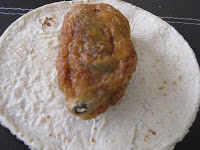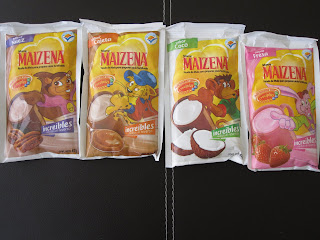
I grew up on Hungry Jack mashed potatoes, Gravy Master and Minute Rice, a culinary childhood that I would not change for anything. Accordingly, for the first twenty-two years of my life, birthdays were celebrated with my mom's gourmet box mix cakes and canned frosting. (Funfetti was always my personal favorite - so festive! - I'm no food snob.) Unfortunately, box mixes are developed to be very moist and do not hold up well bathed in tres leches.
I am my mother's daughter, and I, too, am uninterested in the hassle and expense of baking a cake from scratch - and I'm sure that many others feel the same way. This doesn't mean that we don't deserve to "make" and enjoy tres leches cakes ourselves. With that in mind, I did some experimenting to come up with this lazy tres leches cake (for the rest of us).
(This particular recipe is in cupcake form - my mom's favorite style of cake, but can be made in any cake form. Admittedly, the moistness of the tres leches cake does not lend itself particularly easily to handheld food.)
Ingredients
1 box (500g) yellow cake mix
3 eggs
1/3 cup water
1/3 cup vegetable oil
1 can (14-oz) sweetened condensed milk
1 can (12-0z) evaporated milk
1 cup half and half
1 can vanilla frosting
optional topping (fruit, sprinkles, nuts)
Directions
1 - Preheat oven to 350*.
2 - In a large bowl, mix the cake mix, eggs, water and vegetable oil.
3 - Fill your cupcake pan with paper liners.
4 - Fill each cup about 2/3 of the way full (with about a 1/4 cup of cake batter).
5 - Bake for 20 to 25 minutes, or until a toothpick comes out clean.
6 - While the cake is baking, mix the condensed milk, evaporated milk, and the half and half (our tres leches) together.
7 - When the cupcakes come out of the oven, poke holes into the top with a toothpick.
8 - Immediately spoon the milk mixture onto the cupcakes until there is no milk left.
9 - Put the cupcakes in the refrigerator for at least 30 minutes while the cake soaks up the milk mixture.
10 - Soften the frosting by leaving it in a warm area for at least 30 minutes. (Hard frosting will tear at the cake.)
11 - Frost the cupcakes and top with sprinkles or crushed pecans (or strawberries or peaches, if you must).

















